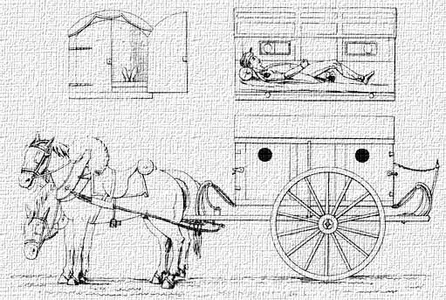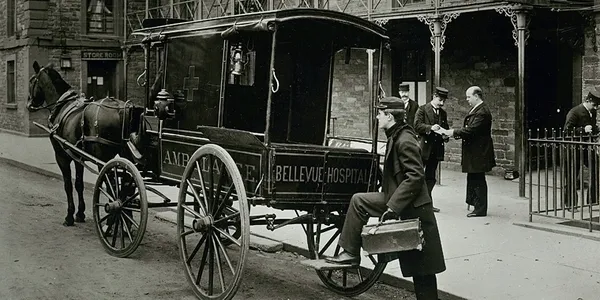Knowing the history of medical transportation is important because in these days it is a vital aspect of medicine. However, in the long history of transportation it hasn’t always been important in medicine.

Greeks and Romans used Medical Transportation in Antiquity
The Romans invented battlefield surgery, and it saved countless lives in their history full with wars. Ancient Roman surgical practices developed from Greek techniques, with Roman surgeons and doctors usually learning through apprenticeships or studying. Surgery was performed at military hospitals (valetudinarius) located inside a fort (castellum) or camp (castra). In order to operate on wounded soldiers, the surgeons used chariots to remove those in need.
However, it would be many centuries before medical transportation became widespread.

Early Medical Transportation Services in the U.S. started in 1865
The U.S. Army institutes America’s first ambulance service in 1865 and civilian ambulance services begin in the United States within Cincinnati and New York City. Hospital interns rode on horse-drawn carriages to help treat the sick and injured patients. However, the first major shift to the modern medical transportation field occurred in 1901 – at the Pan American Expo in Buffalo, NY, when the first electric-powered ambulance was showcased.
Emergency Medical Service (EMS) Systems Act of 1973
Did you know that medical transportation only became a staple of the medical community in 1973? In that year it was changed forever when the United States federal government passed Law 93-154. That law is often referred to as the EMS Systems Act of 1973 – it established that an “emergency medical service system provides for the arrangement of personnel, facilities, and equipment for the effective and coordinated delivery of health care services in an appropriate geographical area under emergency conditions.”
An emergency condition is anyone who suffering because of a disease, an accident, a condition, a natural disaster, or any other similar situation.
In 1978 paramedics started being staffed on-board engine companies in Phoenix, AZ.
In 1981 75% of all fire departments were involved in some level of Emergency Medical Service. The Emergency Medical Dispatcher program was established.
In 1990 the Trauma Care System & Planning Development Act was passed by Congress in an effort to reduce the number of patients resulting with accidental death and disability. Local Emergency Medical Services authorities assumed responsibility for establishing trauma systems and designating trauma centers in an effort to improve care and outcomes of patients suffering from traumatic injuries.
Medical Transportation Systems
A medical transportation system must contain 15 components:
- Communications
- Training
- Manpower
- Mutual Aid
- Transportation
- Accessibility
- Facilities
- Critical Care Units
- Transfer of Care
- Consumer Participation
- Public Education
- Public Safety Agencies
- Standard Medical Records
- Independent Review and Evaluation
- Disaster Linkage
Today, medical transportation companies provide great assistance to people. True to Care offers quality Non-Emergency Medical Transportation services to patients throughout the valley, AZ. Our services include wheelchair, ambulance, dialysis, psychiatric, recreational, hospice and long distance operating 24/7 in Maricopa County and all over the valley fully licensed and insured.



